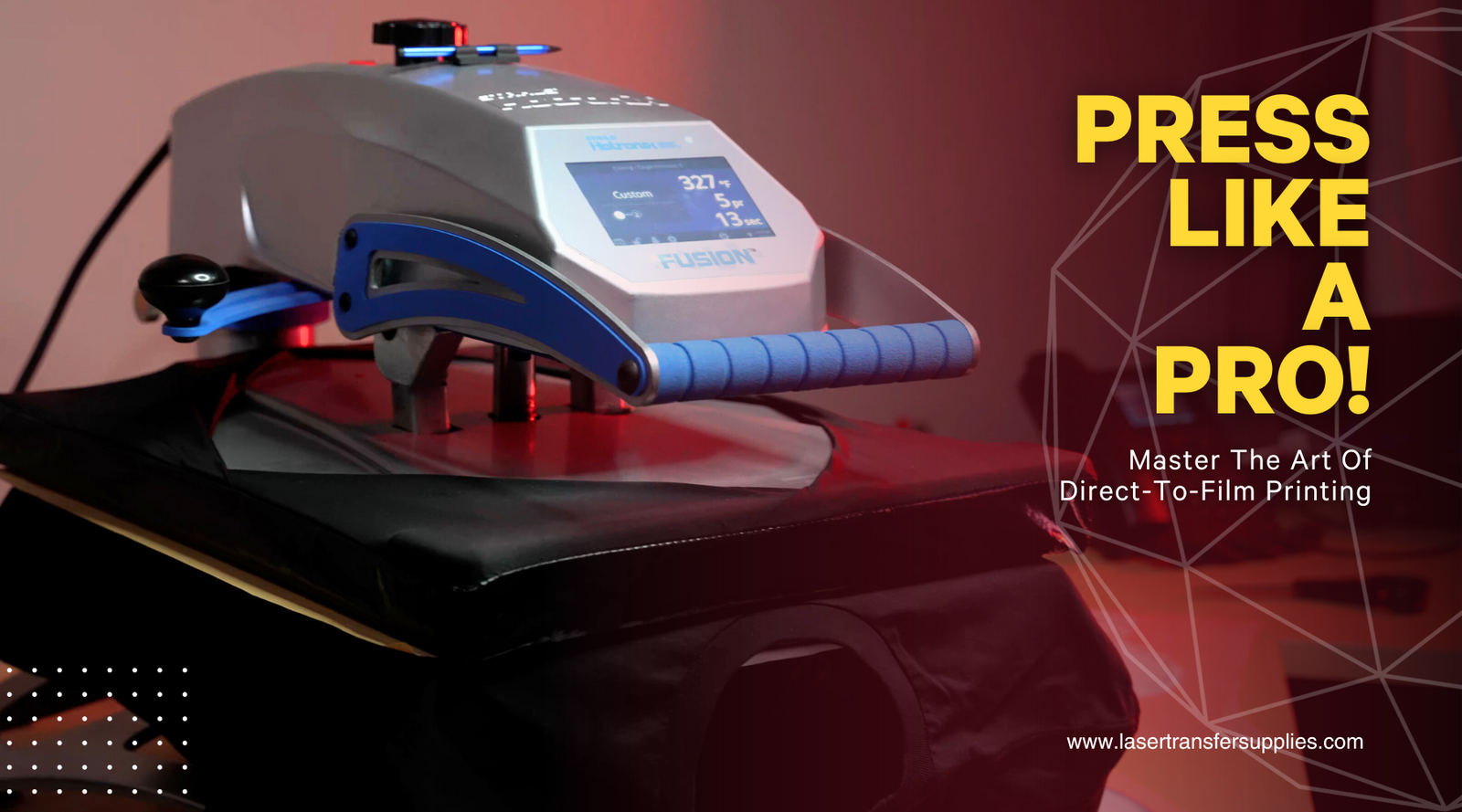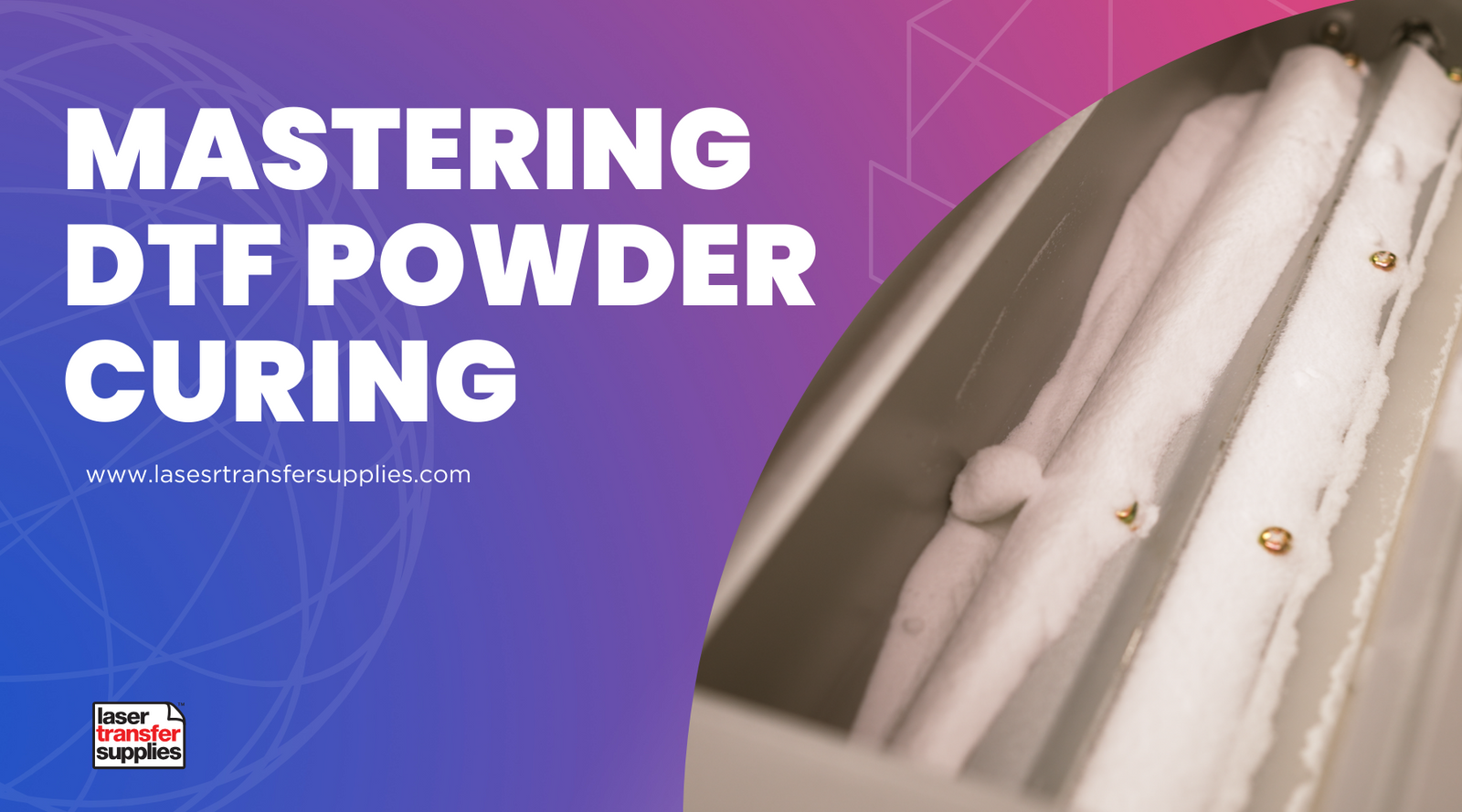
The DTF Transfer Process – A Step-by-Step Guide
Preparing for the DTF Transfer
The DTF transfer process begins with a well-prepared workspace. A clean, dust-free environment is essential. Quality transfer films and inks, as well as a reliable DTF printer, form the basis of successful transfer operations.
Printing the DTF Transfer
Once your workspace is ready, printing can begin. Ensure the design is correctly loaded into the printer software, and set the printer to mirror or reverse mode, necessary for DTF printing. The design, now in mirror image, is printed onto the DTF film.
Applying Powder to the DTF Transfer
The next stage involves coating the printed film with a special adhesive powder. A DTF powder shaker or a powder application machine helps evenly distribute the powder onto the film. The excess is removed, and the film is then heated to melt the powder onto the ink.
Transferring the Design onto the Garment
After the film cools, it's time to apply the transfer to the garment. Position the transfer film onto the textile, ensuring the printed side faces down. Use a heat press to adhere the design to the garment. The ideal temperature, time, and pressure vary depending on the specific garment material.
Taking Care of Your DTF Transfers
After successfully pressing and applying the DTF transfer, it's crucial to follow a suitable maintenance routine. This ensures longevity and preservation of the vibrant colors and sharp details. Regular machine washing and air drying are generally advised for DTF printed items.
Whether you're a beginner or a pro, find the perfect printer for your needs in this comprehensive DTF collection.

Conclusion: Mastering DTF Transfers
Mastering DTF transfers requires practice and patience, but the results are worth it. With high-quality prints, versatility, and ease of use, DTF transfers have quickly become a go-to technique for individuals and businesses alike. Stay on top of the printing game with DTF transfers and create compelling, high-resolution designs that last.
DTF Transfer FAQs
What are DTF Transfers?
DTF (Direct to Film) transfers are the latest innovation in printing technology. They offer high-resolution prints, vibrant color fidelity, and flexibility, making them ideal for creating custom apparel and textiles.
How do I prepare for a DTF transfer?
Preparing for a DTF transfer involves setting up a clean, dust-free workspace and ensuring you have high-quality transfer films, inks, and a reliable DTF printer.
What is the process of DTF printing?
The process starts with loading your design into the DTF printer software in mirror or reverse mode. The mirrored design is then printed onto the DTF film, followed by the application of a special adhesive powder. The film is heated to melt the powder onto the ink. After cooling, the film is applied to the garment with a heat press.
Why is a special adhesive powder used in DTF transfers?
The special adhesive powder in DTF transfers helps bind the design to the garment. It's applied to the printed film and melted onto the ink through heat.
How do I care for garments with DTF transfers?
For longevity and preservation of colors, it's important to follow a maintenance routine. This typically involves regular machine washing and air drying.
What does it take to master DTF transfers?
Mastering DTF transfers requires practice and patience. Understanding each step of the process, from preparation to maintenance, is crucial to achieving high-quality prints.
Why are DTF transfers considered the future of printing?
DTF transfers offer high-quality prints, versatility, and ease of use. They enable the creation of compelling, high-resolution designs that last, making them a preferred printing technique for individuals and businesses alike.


